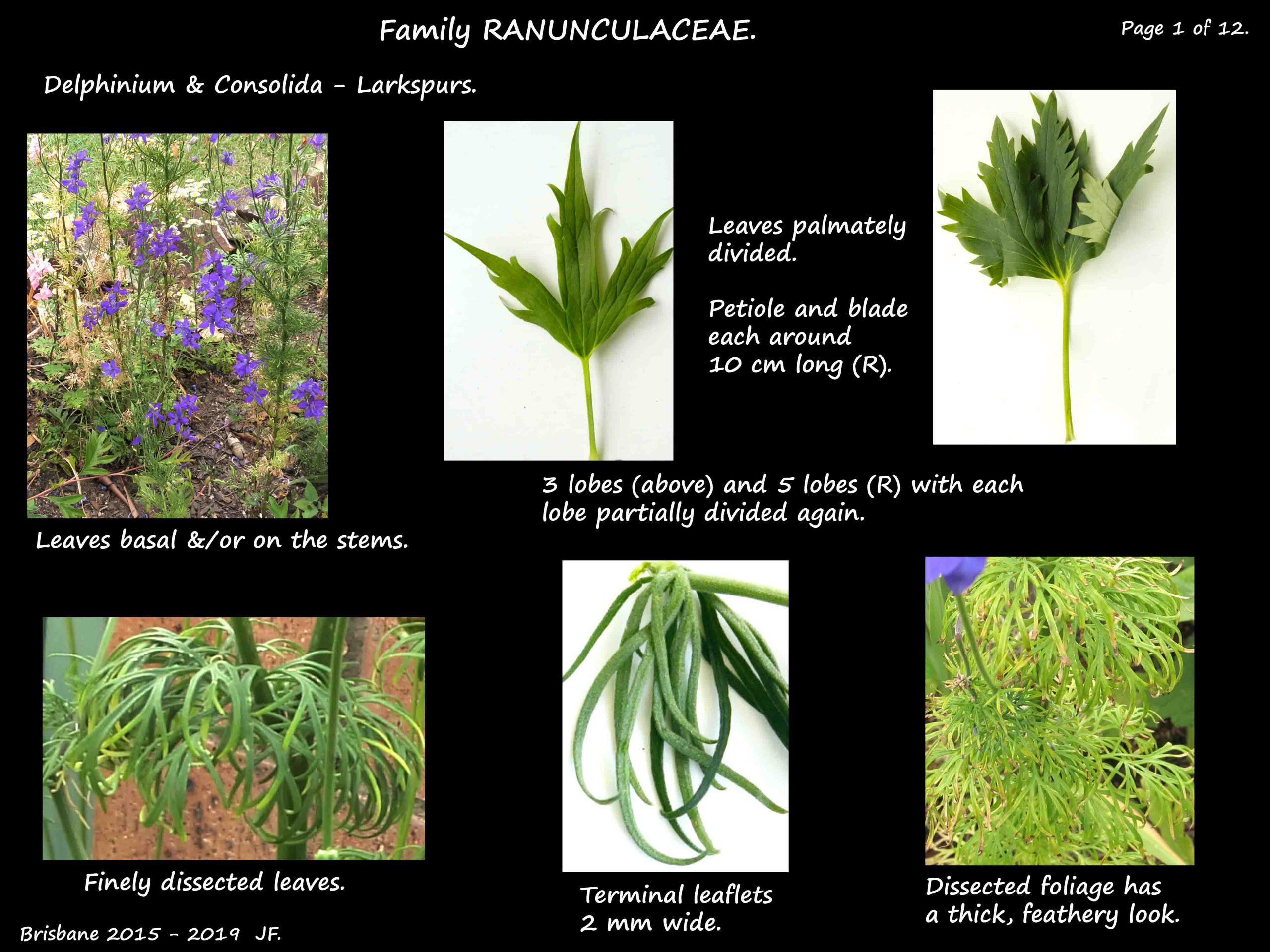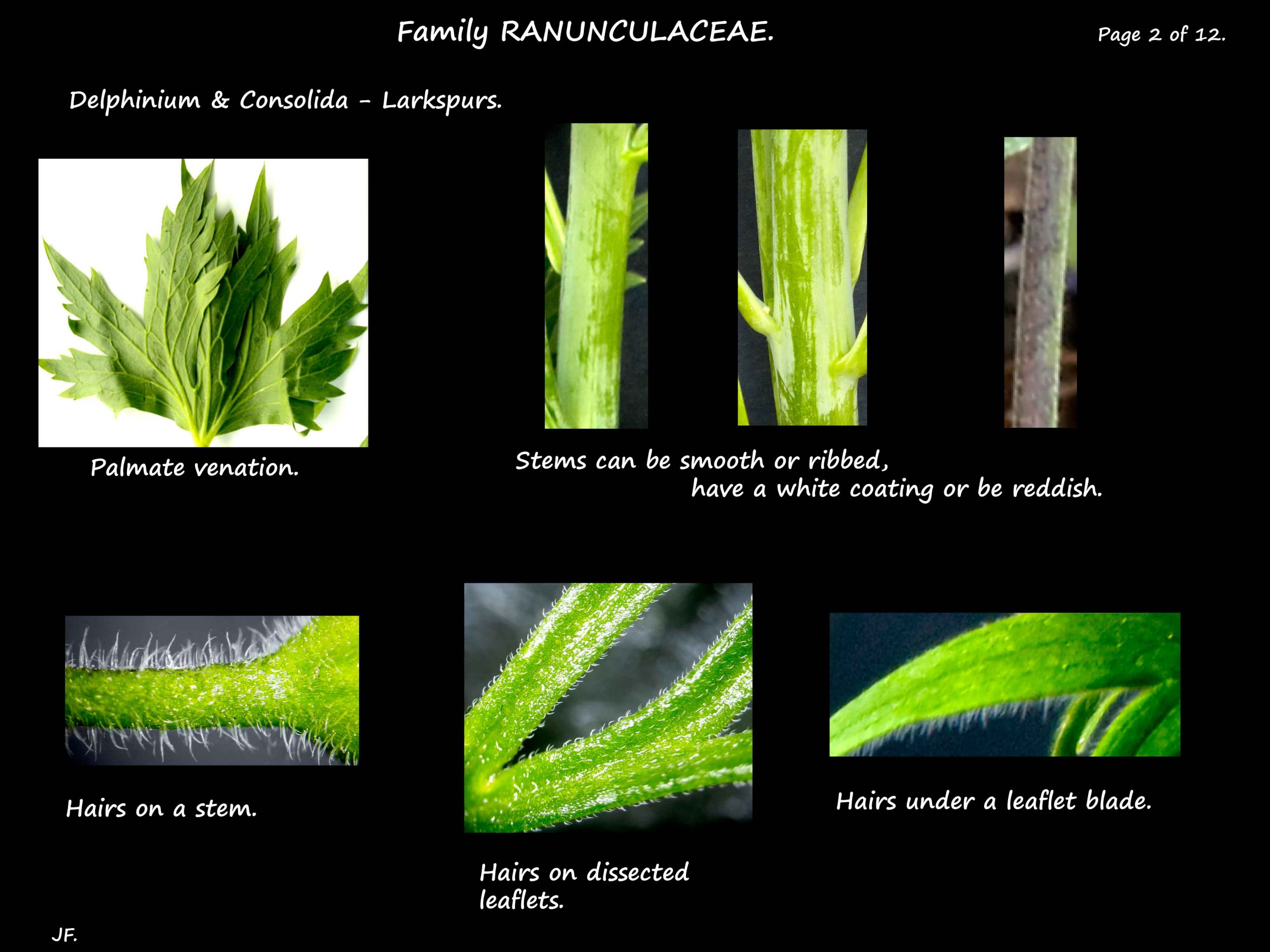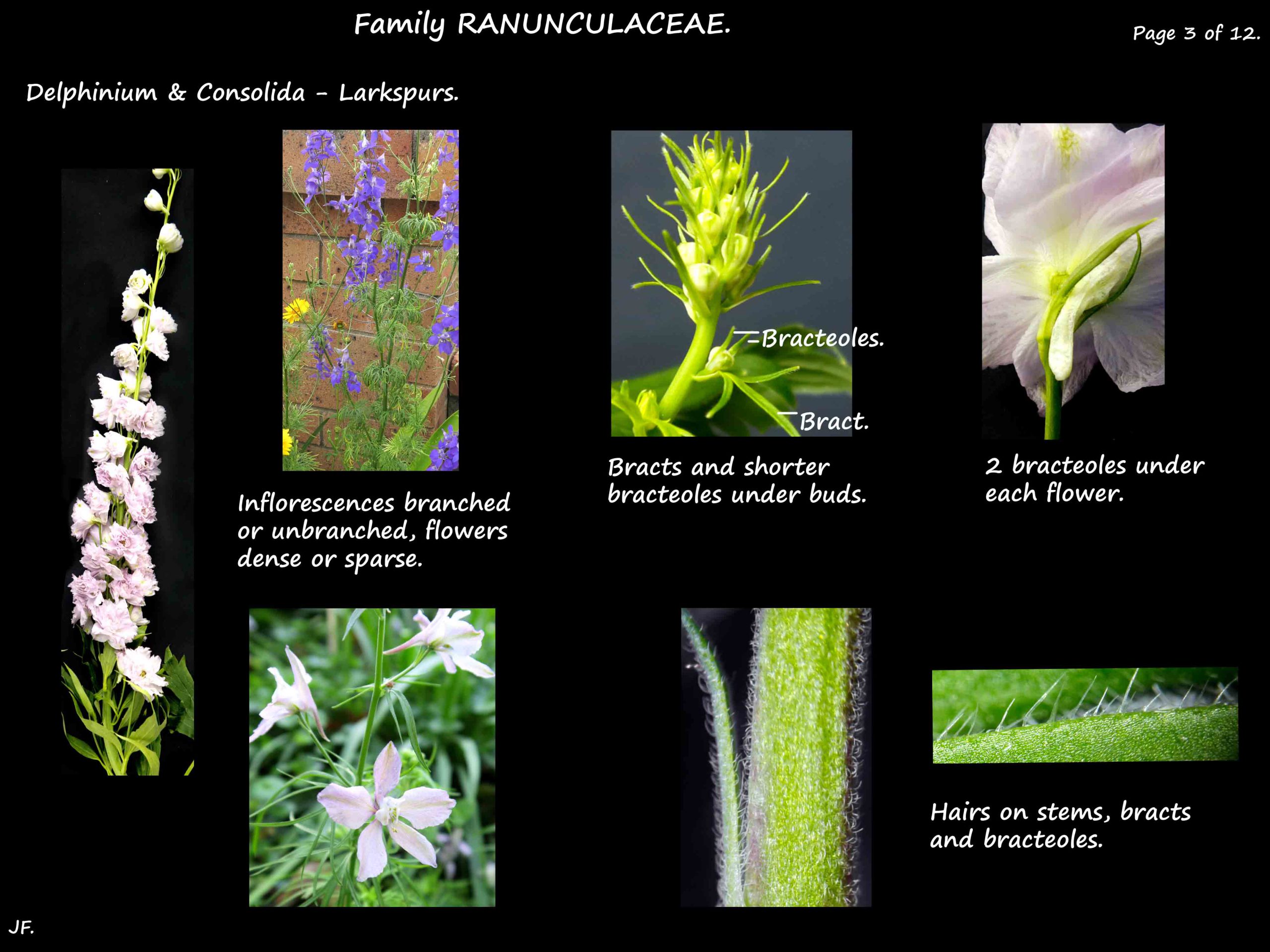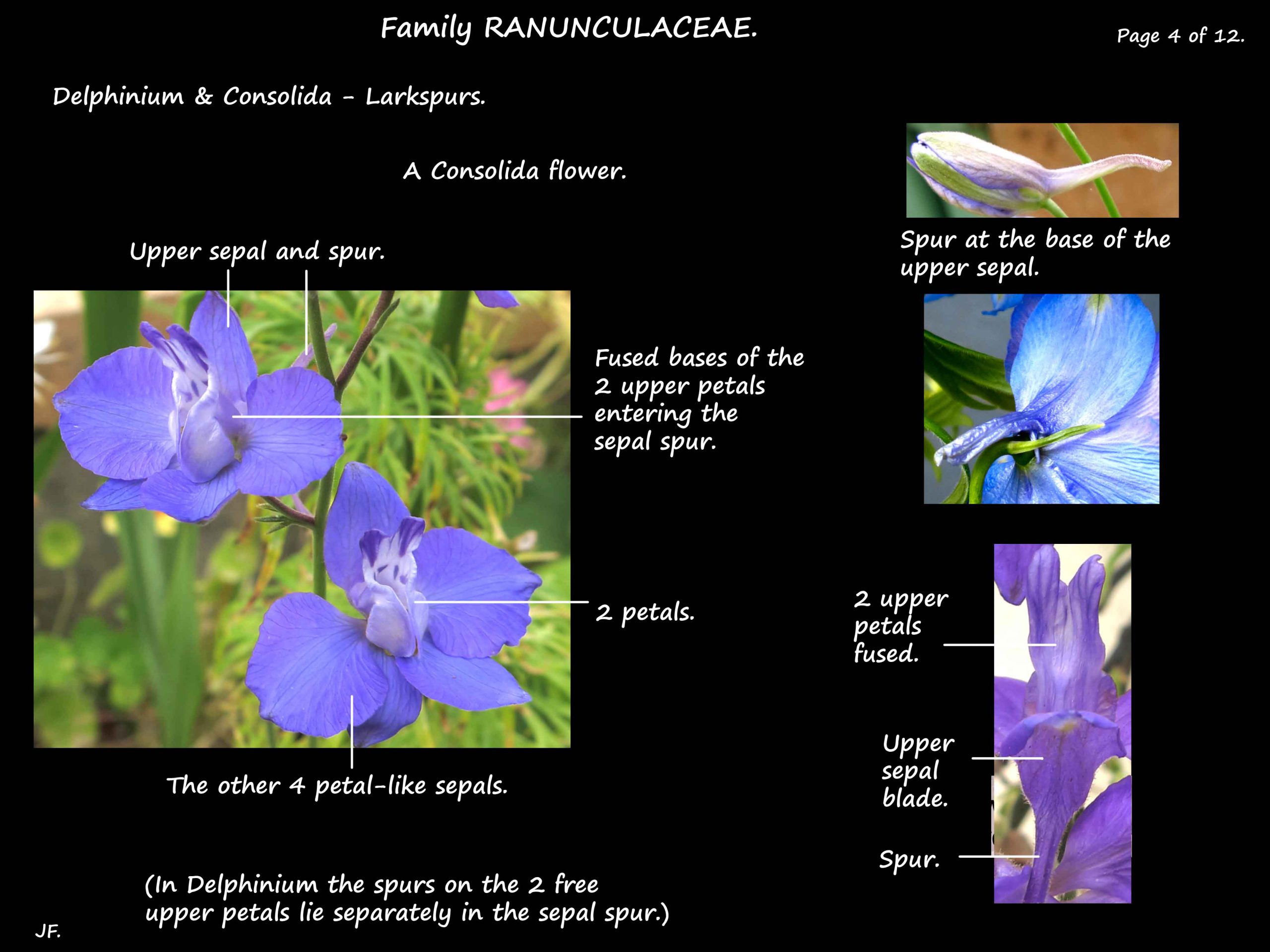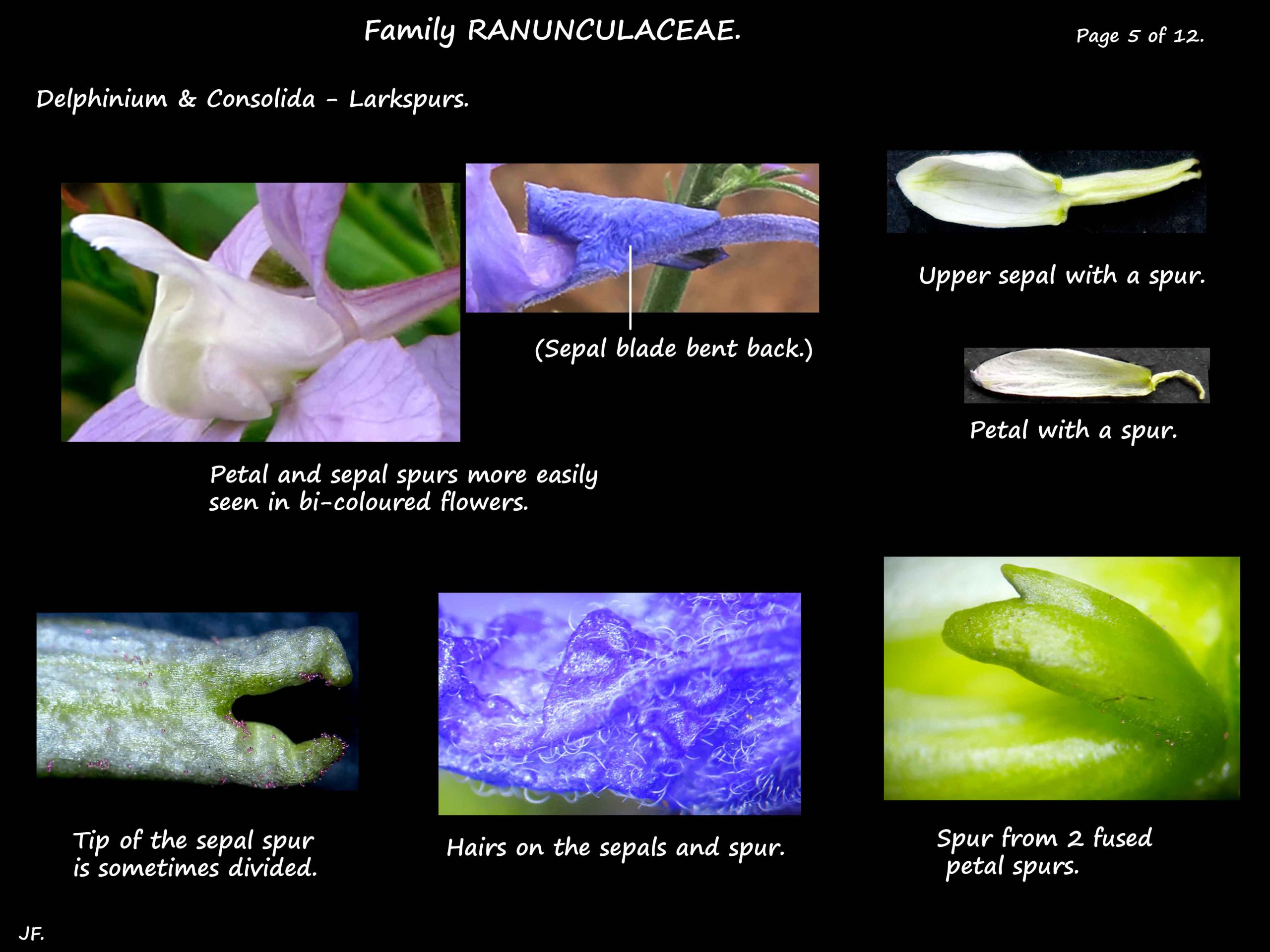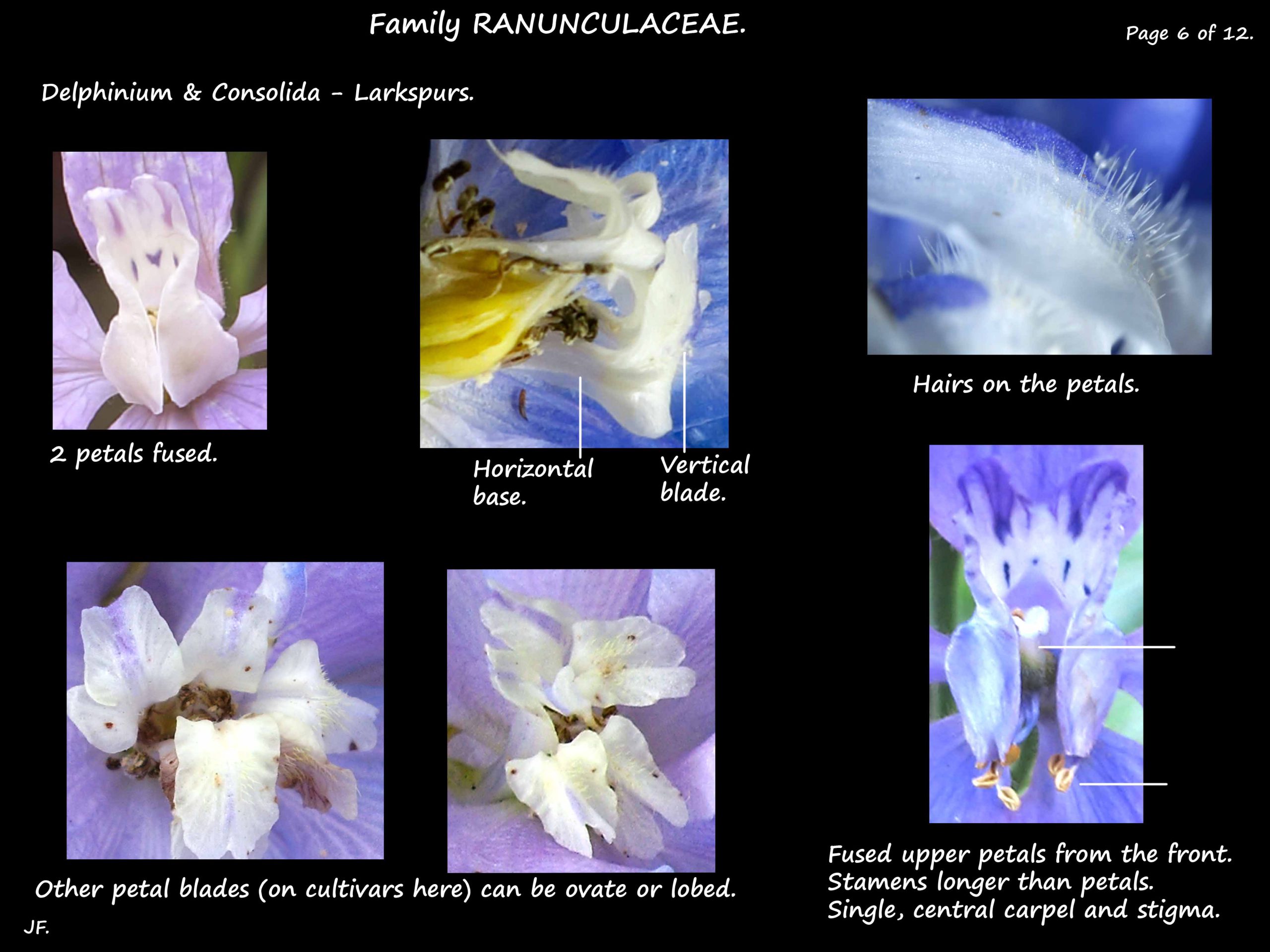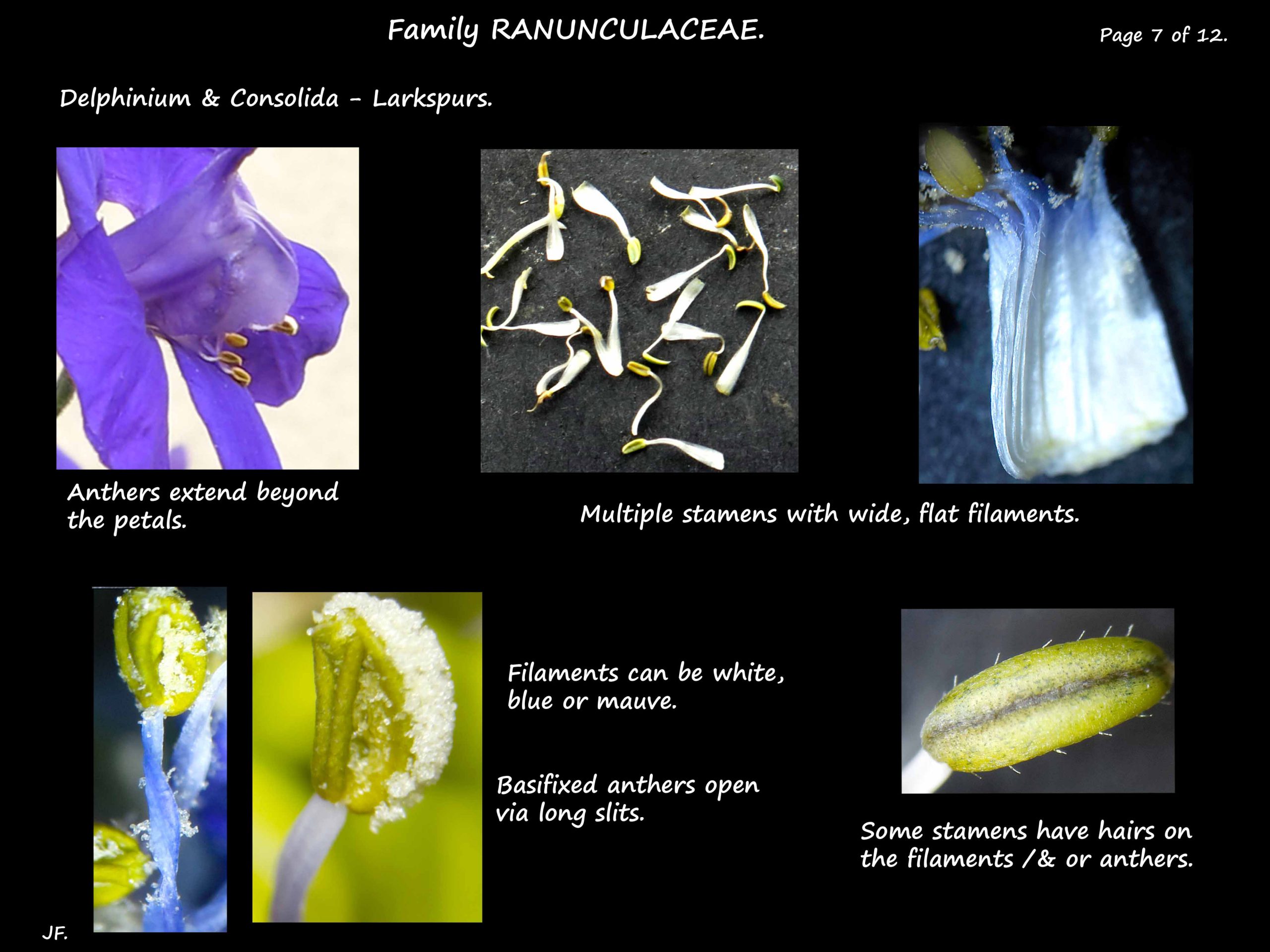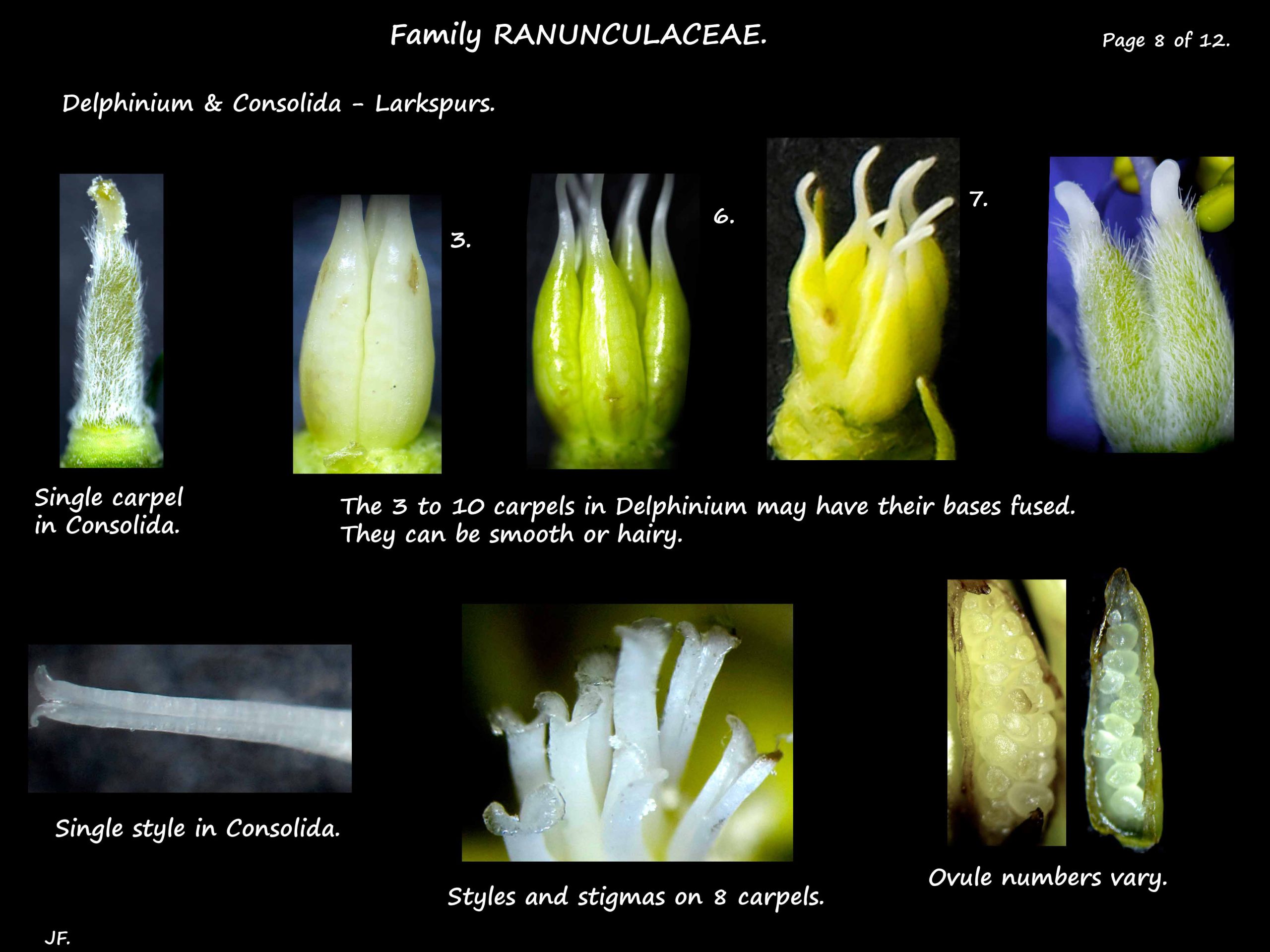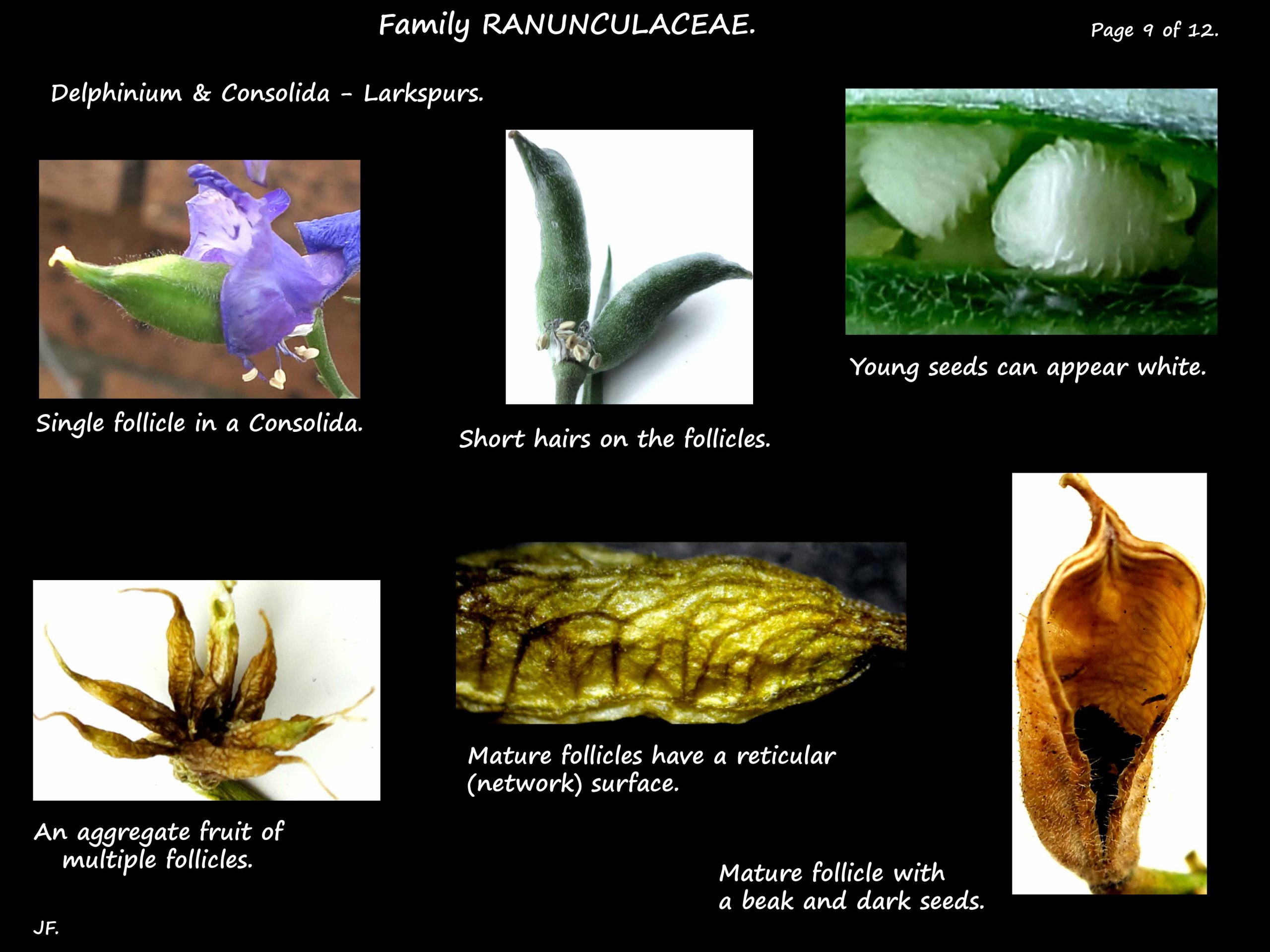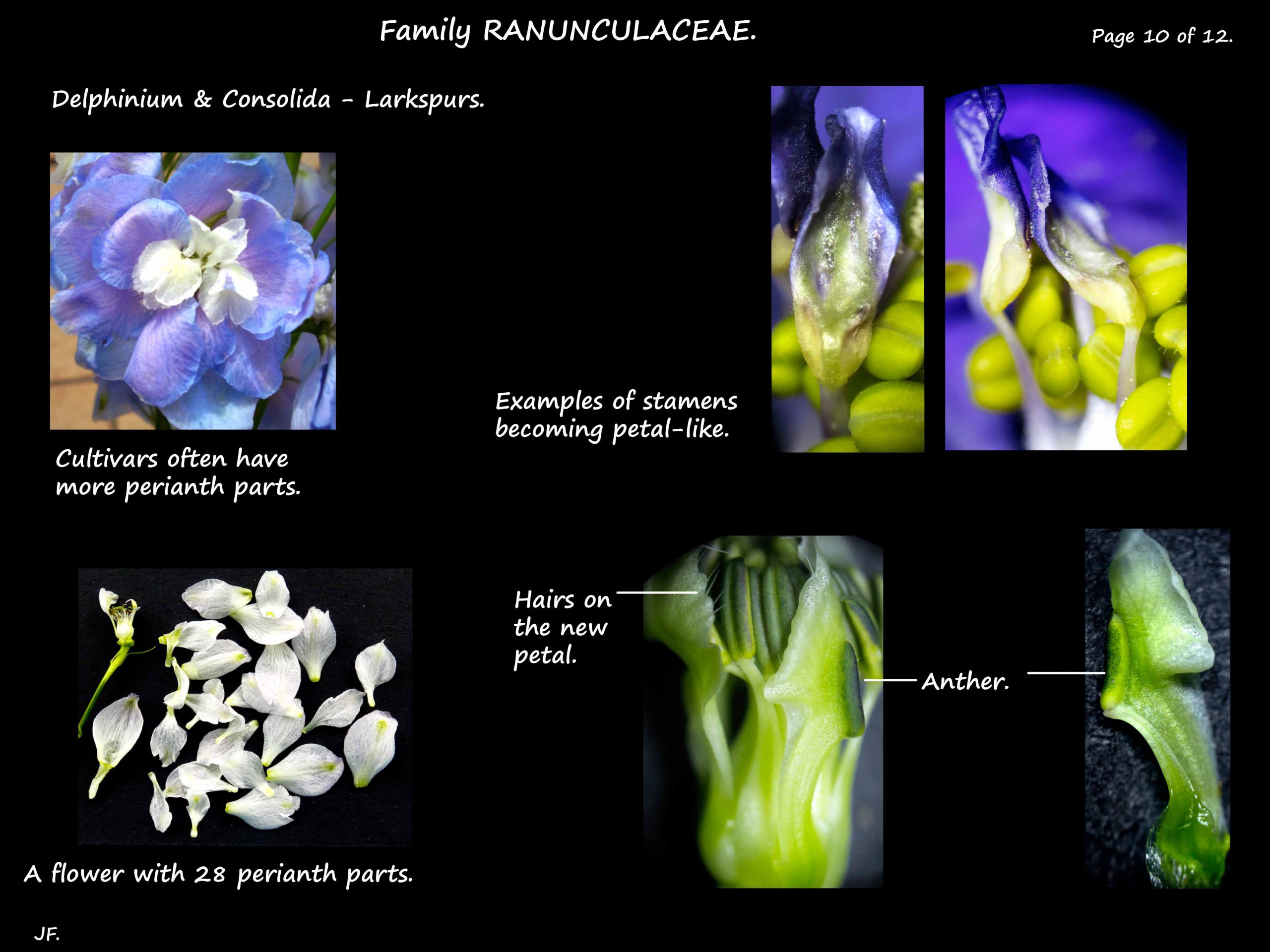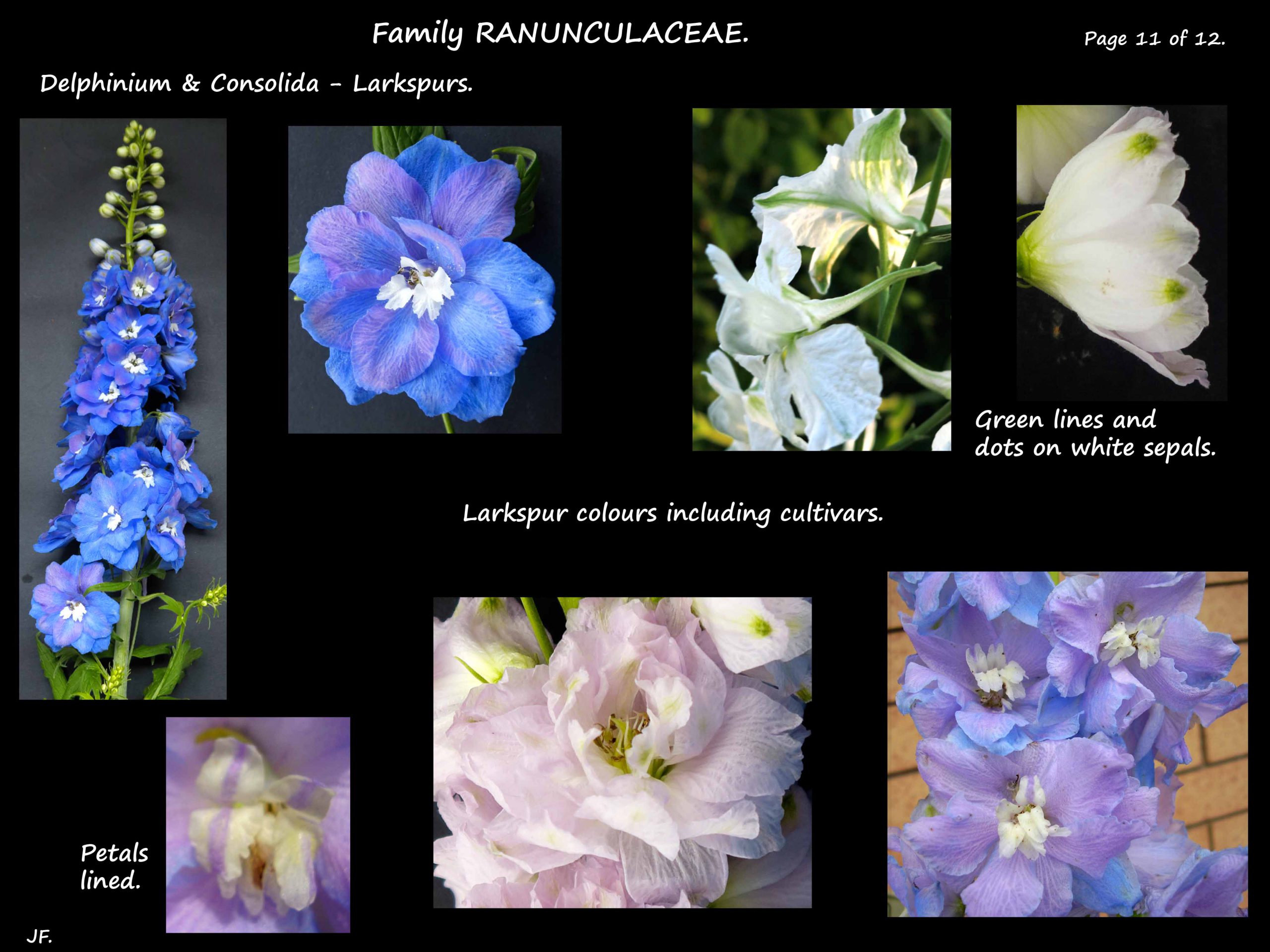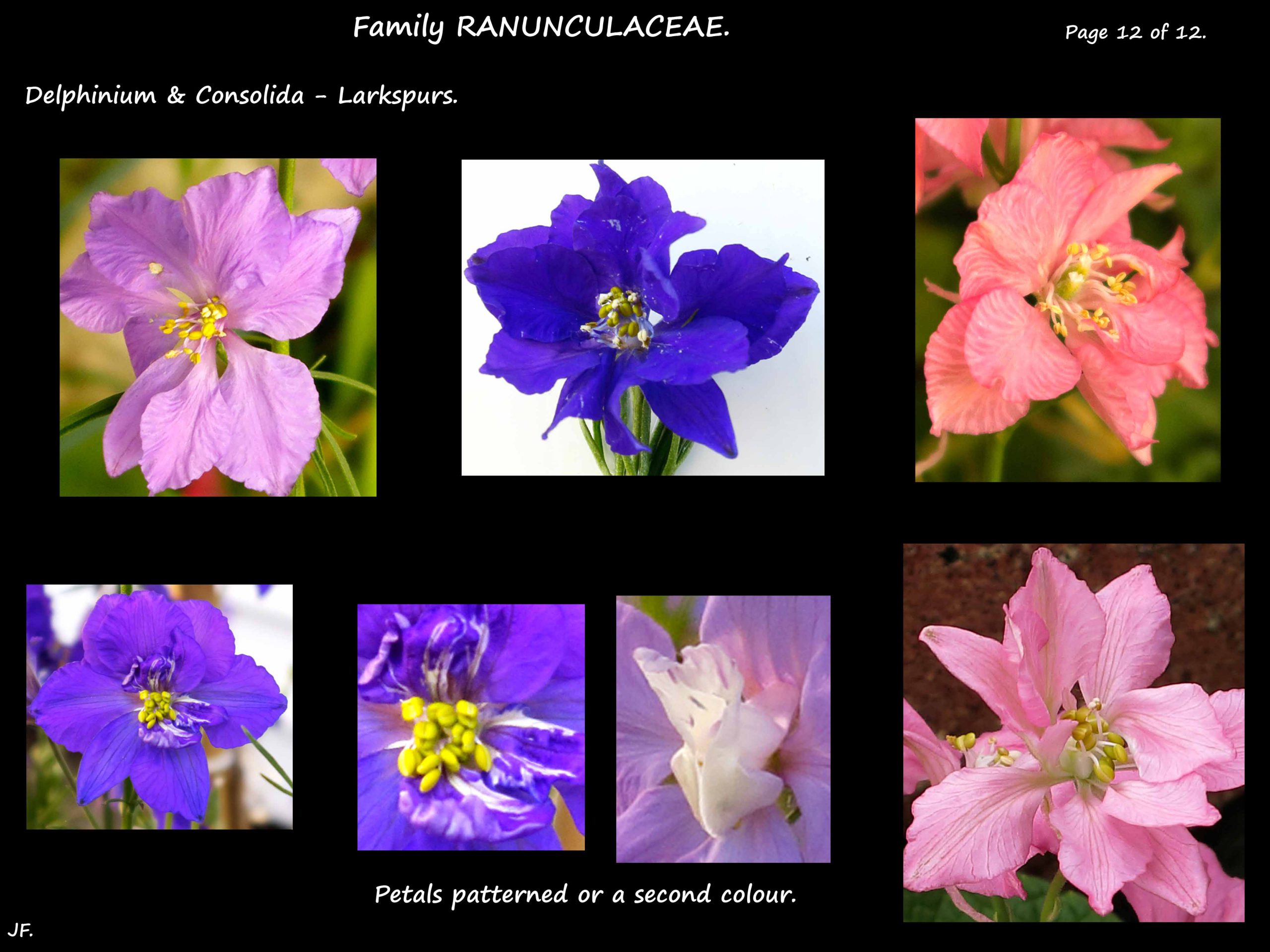Delphinium & Consolida – Larkspurs.
Family Ranunculaceae > Subfamily Ranunculoideae > Tribe Delphinieae.
Delphinium has around 370 species and Consolida around 40.
Species in both are commonly known as Larkspurs.
The classification of these is a source of debate as they are closely related.
Some regard them as separate genera while others say they are all Delphiniums.
Some put Consolida as a sub genus of Delphinium.
Numerous species have been seen as both Delphinium and Consolida.
Flowers of both are bilaterally symmetric and have a spur on the upper sepal.
Consolida are annuals while Delphiniums are perennials or annuals.
In Delphinium the spurs on the upper 2 petals lie within the sepal spur.
Consolida has the spurs of the upper 2 petals fused into one that lies in the sepal spur.
Delphinium usually has an ovary of 3 carpels and Consolida usually only one.
Species and cultivars of both are seen as garden plants and cut flowers.
The following description is based on Delphiniums.
Delphinium.
Most are perennials but there are a few annuals.
Leaves can be in a basal mound and/or alternately arranged on the stems.
Leaves on the stems have shorter or no petioles and gradually change into bracts.
The basal leaves are usually larger and on longer petioles.
Leaf blades are typically deeply palmately divided into 3 to 7 lobes.
These are usually further divided into terminal lobes only a few mms wide.
The edges are smooth or have blunt or sharp teeth.
The erect stems are from 10 cm up to 2 m high.
Occasionally branched they are often reddish in colour.
There are 10 to 30 (over 100) bisexual flowers on the upper part of the stem.
Delphinium flowers are close together while those in Consolida are said to be more widely spaced.
Flowers may or may not be on stalks.
There are 2 leaf-like bracteoles under the flowers.
There are 5, mostly spreading, petal-like sepals.
The upper sepal has a spur, up to 2.5 cm long, that is usually longer than the blade.
The other sepals are ovate to elliptic.
There are 2 or 4 smaller petals with the upper 2 having nectar spurs.
In Delphinium the spurs lie separately within the sepal spur.
In Consolida the 2 petal spurs fuse before entering the sepal spur.
The lower 2 petals have a narrow clawed base and a blade that is around 6 mm long.
The ovate or 2-lobed blades are at right angles to the claw.
Petals are usually hairy and are often the same colour as the sepals.
Commonly blue they can also be white, pink, red or purple.
There are numerous (25 – 40) stamens whose filaments have a wide base.
The ovary commonly has 3 carpels (5 – 10). (Consolida usually has 1.)
Each carpel has up to 20 ovules.
The styles have small inconspicuous stigmas.
The fruit are aggregates of 3 (5 -10) follicles. (A single follicle in Consolida.)
Each has a short beak at the top.
The usually dark seeds may look white due to air in their surface cells.
The seeds have narrow wings or rows of tiny scales.
There are numerous cultivars and hybrids from Delphinium and Consolida species.
Stems can be up to nearly 2 m long and some have large flowers.
Double flowers have extra ‘petals’ derived from the sepals or possibly the stamens.
Some have no spurs (Ranunculus types).
They can be a single colour – often blue but also white or pink.
Many are bi-coloured with the ‘flower’ being shades of blue, red, pink, violet, cream
or white and the central ‘eye’ being white, cream or brownish to almost black.
J.F.
